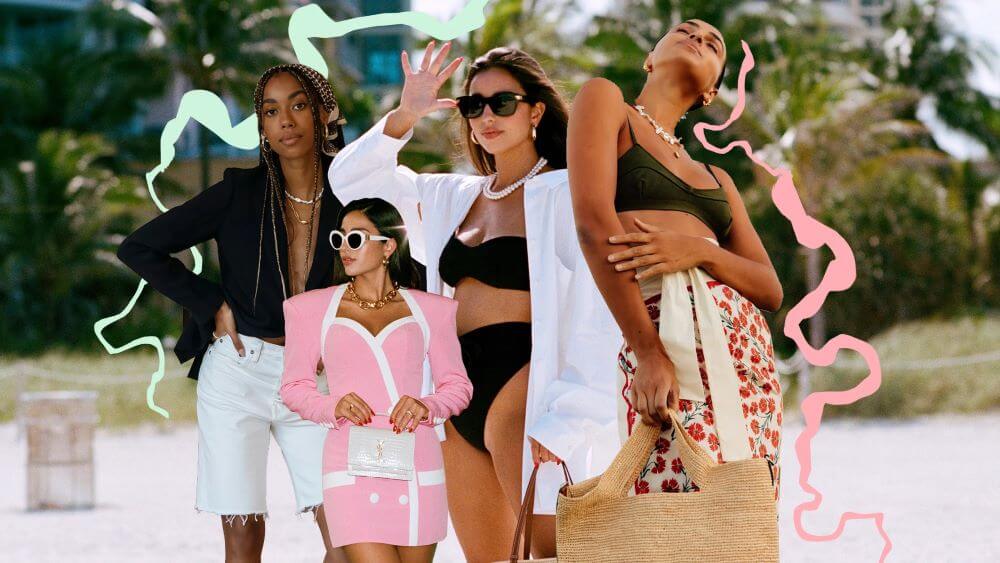In today’s digital age, fashion marketing strategies have evolved dramatically, largely due to the rise of social media influencers. The symbiotic relationship between fashion brands and influencers has reshaped how consumers discover and engage with fashion trends.
Unpacking Influencer Marketing
What is Influencer Marketing?
Influencer marketing is a modern-day marketing strategy that involves partnering with popular social media personalities, known as influencers, to promote products, services, or brands. These individuals have a significant following and the power to affect the purchasing decisions of their audience through their authority, knowledge, expertise, or relationship with their followers.
The Fashion Forward Benefits
1. Enhanced Brand Visibility
Influencers from the likes of Connect Management can catapult a brand into the spotlight overnight. By leveraging their extensive reach:
Immediate Exposure – When an influencer wears a brand, they expose it to a vast audience instantly.
Visual Appeal – Fashion is visual, and influencers who share high-quality images or videos of themselves with the products can make a brand more appealing.
2. Targeted Audience Engagement
Influencers specialize in niche markets, allowing fashion brands to reach specific demographics:
Age-Specific Marketing – Younger demographics tend to follow and engage with influencers more frequently.
Interest-Based Targeting – Brands can collaborate with influencers who align with their style and ethos, ensuring that their messaging reaches those most likely to be interested.
3. Authentic Connections
Influencers build trust and credibility through their personal stories and genuine content:
Personal Recommendations – Products endorsed by influencers often come across as trusted recommendations rather than corporate advertising.
Relatable Content – Influencers often create content that resonates with everyday experiences, making fashion brands more relatable to consumers.
The Mechanics of a Successful Collaboration
Crafting the Perfect Partnership
To reap the full benefits of influencer marketing, fashion brands need to strategically choose and collaborate with the right influencers. Here are some steps to ensure a fruitful partnership:
- Identify the Right Fit – Select influencers whose style and audience align with the brand’s values and aesthetics.
- Set Clear Objectives – Define what the brand aims to achieve, whether it’s increasing brand awareness, launching a new product, or entering a new market.
- Collaborate on Content – Work closely with influencers to create content that feels authentic and aligns with the brand’s overall marketing strategy.
- Measure Success – Use analytics to track engagement, conversions, and ROI from influencer partnerships.
Leveraging Trends and Building Brand Loyalty
Influencer marketing not only boosts immediate visibility but also plays a crucial role in trendsetting and building long-term brand loyalty. Here’s how influencers can be pivotal in these areas:
Trendsetting Through Influencers
Influencers are often seen as trendsetters in the fashion world. Their ability to pick up, showcase, and popularize new trends can be invaluable for fashion brands looking to stay relevant.
- Showcasing Seasonal Collections – Influencers can introduce new seasonal collections to their followers, helping brands capitalize on the excitement of new trends.
- Innovative Styling – By styling outfits in innovative ways, influencers can give old products new life, or show the versatility of newer items, encouraging multiple purchases.
Building Brand Loyalty
The journey from attracting followers to building loyal customers can be significantly accelerated with the help of influencers.
- Consistent Engagement – Regular posts, stories, and updates about a brand help keep the audience engaged and increase the likelihood of repeat purchases.
- Behind-the-Scenes Content – Influencers can share behind-the-scenes looks at fashion brands, such as design processes or ethical practices, which helps in building transparency and trust.
Incorporating User-Generated Content
Influencers can encourage their followers to post their own content wearing or using the brand’s products, which serves as powerful social proof.
- Hashtag Campaigns – Create a branded hashtag for users to share their own photos and experiences, which increases content reach and brand visibility.
- Contests and Giveaways – These can encourage participation and generate more user-generated content, deepening audience engagement with the brand.
Harnessing the Power of Visual Storytelling
In a visually driven industry like fashion, the way a brand presents itself can make a huge difference. Influencers, with their skills in photography, videography, and content creation, can tell a brand’s story in an appealing and engaging manner.
- Visual Cohesion – Influencers can help maintain a consistent aesthetic in their posts that aligns with the brand’s image, strengthening brand identity.
- Emotional Connection – Through their storytelling approach, influencers can forge an emotional connect by aligning the brand’s values with those of their followers.
By leveraging these strategies, fashion brands can use influencer marketing not just to increase sales, but also to build a robust and loyal customer base, ready to follow them into the future of fashion.
Frequently Asked Questions
Q: How do I measure the ROI of influencer campaigns?
A: To measure ROI, track metrics such as engagement rates, traffic generated from influencer links, conversion rates, and overall sales during the campaign period.
Q: Can small fashion brands benefit from influencer marketing?
A: Absolutely! Smaller brands can leverage micro-influencers with smaller but highly engaged audiences. This can be a cost-effective strategy to build trust and visibility.
Conclusion
In the ever-evolving landscape of fashion marketing, those who can skillfully integrate influencer partnerships into their strategies are likely to stay ahead of the curve.
